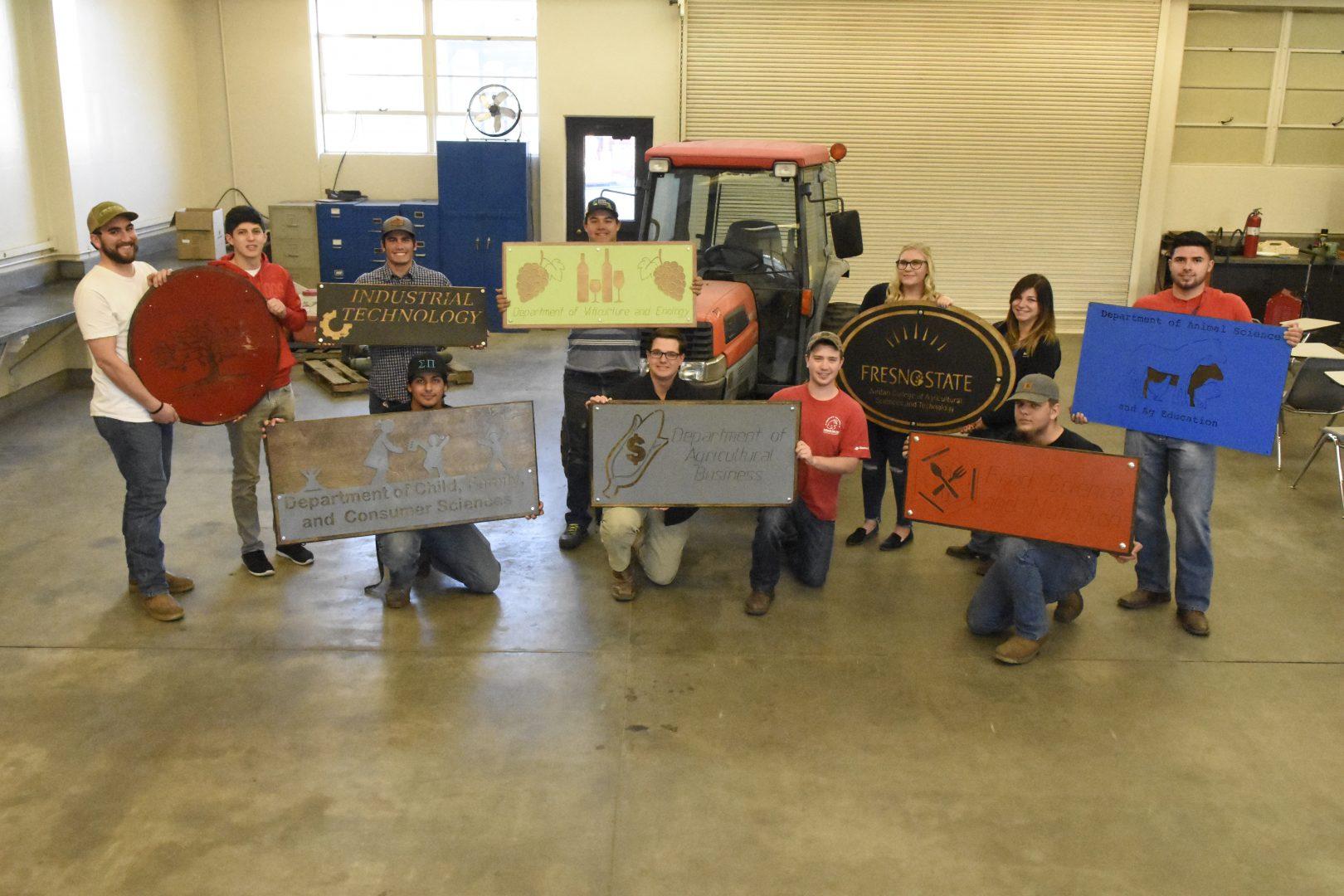Fresno State agriculture students used their final project from the fall semester as a chance to showcase their art skills for their college. They created signs for the seven departments of the Jordan College of Agricultural Sciences and Technology.
In addition, signs were made for the dean of the college and Dr. James Moller, who, along with his wife, donated $250,000 dollars to the mechanized agriculture program.
Moller is a professor emeritus at the University of Minnesota but grew up in Fresno. His donation helped fund upgrades for the mechanized agriculture laboratory.
“[Moller] liked our program and could see that we could really benefit from a donation from them,” said Cassidy Steenbock, a senior majoring in agriculture education.
The signs were the final project for John Williams’ Mechanized Agriculture 120 class. Williams gave the students free reign in choosing which sign they wanted to create.
“The main thing was to let them use the foundation skills that they’ve learned, but then come up with a final product that we can display throughout the university,” Williams said.
He said he was impressed with the final products.
“[It] was really cool to see the students come up with their own designs and utilize their creativity,” Williams said.
Steenbock created a sign for Moller as well as a wood plaque for him.
“He was really happy,” Steenbock said. “I don’t think he was really expecting us to do something that big.”
Steenbock said Moller’s donation made a significant impact on the mechanized agriculture program.
“I’ve been in the shop before his donation came in, and I’ve been here after,” Steenbock said. “It’s so different in here, and it’s so much better.”
Steenbock added a micrometer to the sign because Moller’s father was a machinist. And Moller had reportedly made the donation to the ag school in memory of his father.
Christopher Sharp, a senior majoring in agriculture education, made a sign for the viticulture and enology department.
“I come from Santa Rosa in Sonoma County — which is by Napa Valley. Wine is a really big thing up there, so I wanted to do the viticulture and enology department,” Sharp said.
Sharp incorporated wine and grapes into the sign’s design. He also stained the sign with red wine.
“The staining process was kind of unique,” Sharp said. “I wanted to do something that was a little bit different.”
Sharp made the sign out of plywood and sheet metal.
For the wood portion, Sharp used a table saw. For the metal portion, he used a computer numerical control (CNC) plasma cutting table. The project overall was one he won’t soon forget.
“The CNC machine is really good for cutting out designs that you want to make mass productions of items for,” Sharp said. “Instead of measuring and cutting multiple times, you can just input the design one time, and you can cut it out 20, 100, 50,000 times.”
Steenbock said that making the sign was a unique assignment.
“When I’m a teacher and I bring my students here, I can show them that when I went here, I made that sign — and it’s going to be here for generations,” Steenbock said.




